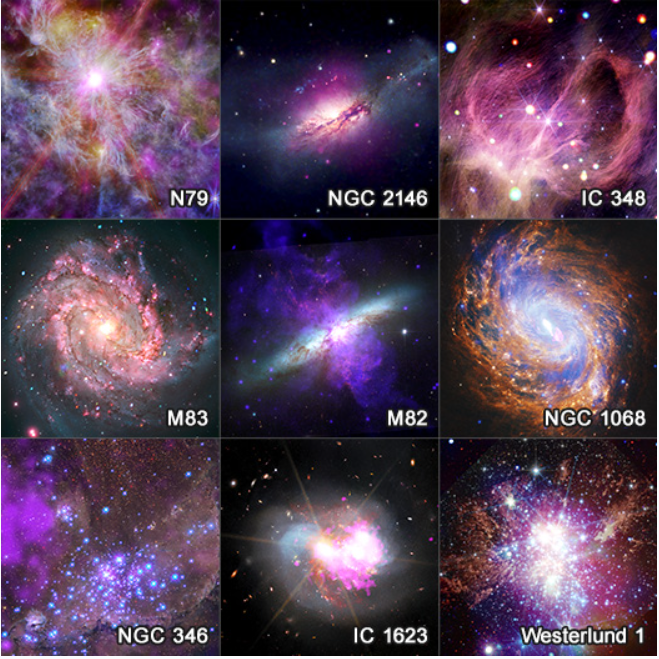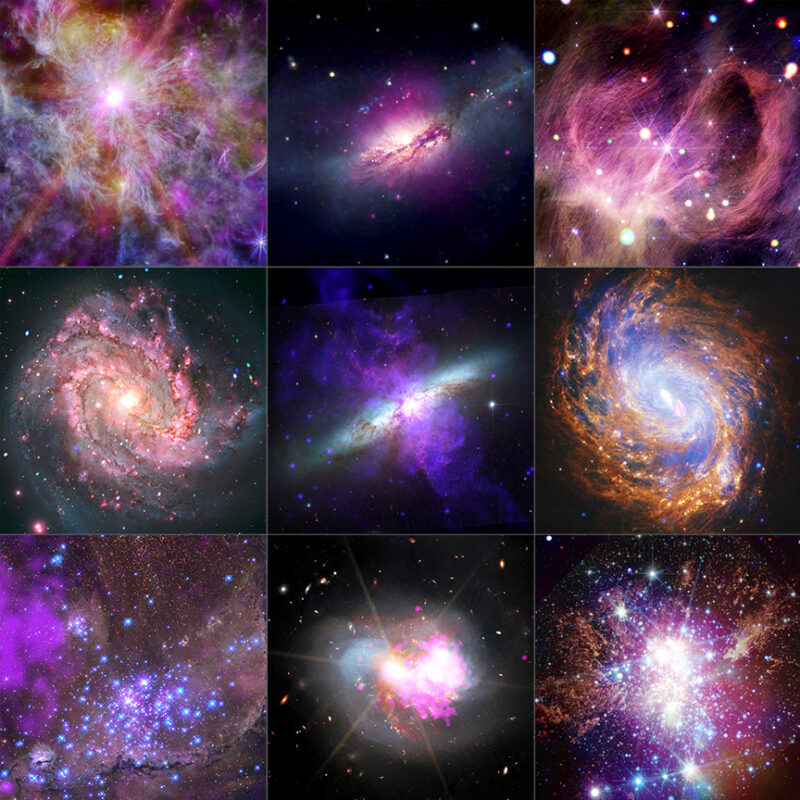New Chandra images!
The Chandra X-Ray Observatory has been sending back images from its position in space since 1999. And the newest collection, released by NASA and the Harvard-Smithsonian Center for Astrophysics on July 23, 2025, are stunners. This group of nine images features distant galaxies and bustling regions of star formation.
These images also incorporate data from other telescopes, such as the James Webb Space Telescope and the Hubble Space Telescope.
From top to bottom and left to right, the images are of N79, NGC 2146, IC 348, M83, M82, NGC 1068, NGC 346, IC 1623 and Westerlund 1. Read on to find out a little more about each of them.
All that glitters
Here are the highlights of the nine new objects from Chandra. Refer to the labeled image at bottom.
N79 is a star factory in the Large Magellanic Cloud, about 160,000 light-years away. Newborn stars are creating the hot gas we see here.
NGC 2146 is a spiral galaxy in Camelopardalis, about 44 million light-years away. Hot gas is blowing away from the galaxy thanks to supernovas and the wind of giant stars.
IC 348 is a region of star formation in our own Milky Way galaxy. The stars are illuminating wispy tendrils of interstellar material.
M83 is the Southern Pinwheel Galaxy in Hydra. A new study of this face-on spiral said galaxies like this one can sustain star formation by pulling in gas from the region between galaxies.
M82 is the Cigar Galaxy in Ursa Major. It’s a starburst galaxy, producing stars some 100 times faster than other galaxies. Supernovas here have spread their remains millions of light-years from the galaxy’s disk.
NGC 1068 (aka M78) is the Squid Galaxy in Cetus. Its central supermassive black hole releases a powerful wind blowing at a million miles per hour.
NGC 346 is an area of star birth in the Small Magellanic Cloud. Some of the young, massive stars here are less than 2 million years old.
IC 1623 is a pair of merging galaxies in Cetus. As the gas and dust of the galaxies collide, it triggers new star formation.
Westerlund 1 is our galaxy’s most massive young star cluster. It lies just 12,000 light-years away toward the constellation Ara. If our solar system were located at its heart, our sky would be full of hundreds of stars as bright as the full moon.
New images with labels

Bottom line: New Chandra images highlight glittering spectacles of the cosmos, from star factories to black-hole-powered galaxies.
Via Chandra X-Ray Observatory
